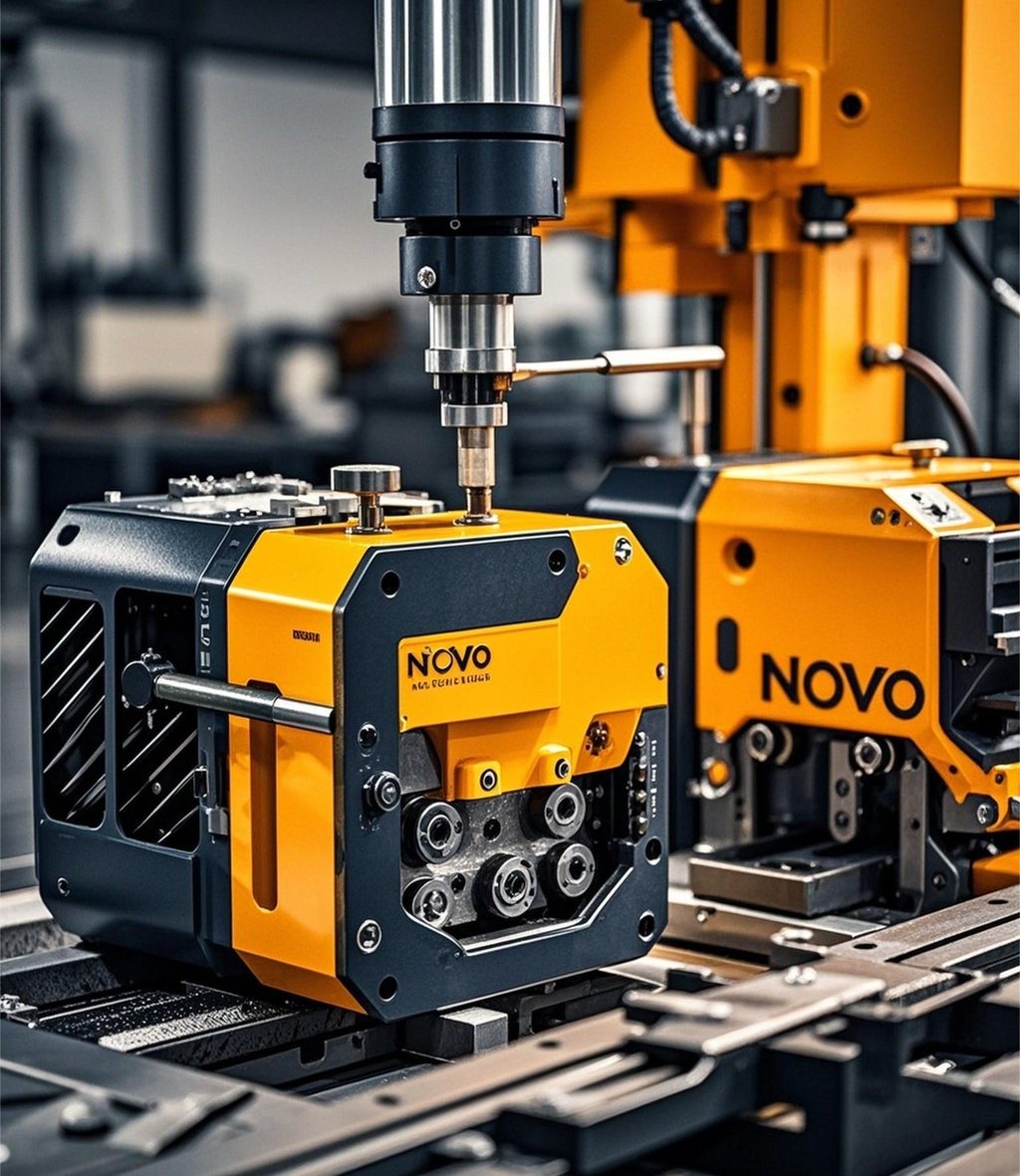Busbar Processing Machine Performance Parameters
Discover how to enhance the reliability of power equipment through precision control of busbar processing machines. Explore detailed performance parameters and improve your operations effectively.
7/27/20255 min read


Understanding Busbar Processing Machines
Busbar processing machines are specialized tools designed for the fabrication and handling of busbars, which are crucial components in power distribution systems. Their primary function is to cut, bend, and drill busbars, ensuring that they meet the required specifications for efficiency in power transmission. These machines facilitate the precise manipulation of busbars, which are typically made from highly conductive materials such as copper or aluminum. In the power equipment industry, the reliability of these busbars directly correlates with the overall performance of electrical systems.
A busbar processing machine typically comprises several key components, including cutting blades, bending units, drilling apparatus, and control systems. Each of these components plays a pivotal role in the operational accuracy and effectiveness of the machine. The integration of advanced technologies, such as computer numerical control (CNC), has also led to enhanced precision in busbar processing. This level of accuracy is vital, as even slight deviations in busbar dimensions can result in significant losses in electrical efficiency and increase the risk of equipment failure.
There are various types of busbar processing technologies available, including mechanical punching, laser cutting, and hydraulic bending. These methodologies influence the performance parameters of the machines and, consequently, the quality of the busbars produced. For instance, laser cutting offers cleaner edges compared to traditional mechanical methods, which can minimize the risk of electrical arcing during operation. Understanding these different processing technologies is essential for selecting the right machine that meets specific operational needs in the power sector.
The basic operating principles governing busbar processing machines revolve around the precise control of the processing parameters, such as speed, force, and positioning. Proper calibration of these variables is crucial in achieving the accurate manufacturing of busbars, thereby ensuring their reliability in the broader context of power distribution systems. The effective integration of these elements ultimately enhances the longevity and performance of power equipment, highlighting the significance of understanding busbar processing machines within the industry.
Key Performance Parameters of Busbar Processing Machines
The performance of busbar processing machines is contingent upon several critical parameters that collectively determine their effectiveness and reliability in various applications. Among these, accuracy stands out as a paramount factor. High precision in busbar fabrication ensures that electrical conductors fit correctly within their respective systems, minimizing resistance and potential points of failure. Machines equipped with advanced measurement technologies can guarantee tolerances within tight specifications, thereby enhancing the dependability of power equipment.
Speed is another vital performanceparameter, as it directly influences the throughput of busbar processing operations. Faster processing times allow for more significant production capacity, which is essential in meeting the increasing demands of modern electrical infrastructure. However, it is crucial to balance speed with accuracy; machines that compromise precision for speed can lead to costly rework and extended downtime.
Flexibility in processing capabilities also plays a crucial role in the efficiency of busbar machines. A versatile machine can handle various busbar sizes and configurations, allowing manufacturers to adapt quickly to changing market requirements without extensive downtime or reconfiguration. This adaptability not only optimizes production but also reduces the need for multiple specialized machines, which conserves resources and lowers operational costs.
Lastly, automation capabilities significantly impact operational reliability. Automated systems equipped with sensors and smart technology can monitor performance in real-time, identify potential issues before they escalate, and reduce the risk of human error. Consequently, integrating advanced automation streamlines workflows, enhances consistency, and extends the lifespan of the machinery through proactive maintenance strategies. Overall, these key performance parameters—accuracy, speed, flexibility, and automation—are integral to improving the reliability of busbar processing machines and, by extension, the quality of power equipment.
Techniques for Precision Control in Busbar Processing
In the field of busbar processing, maintaining precision control is essential for ensuring the reliability and efficiency of power equipment. One of the foremost techniques employed for achieving this level of accuracy is through the utilization of advanced automation technologies such as Programmable Logic Controllers (PLCs) and Computer Numerical Control (CNC) systems. These technologies allow for precise adjustments and control of the busbar processing machinery, minimizing the risks of human error and maximizing efficiency.
PLCs serve as the backbone of modern automation, offering a range of programmable functions that can respond dynamically to various processing conditions. By integrating PLCs into the busbar processing machines, operators can implement sophisticated control algorithms that enhance precision, ensure real-time adjustability, and facilitate improved overall performance. For instance, PLCs can monitor the operational status of machine components and adjust parameters instantly based on the feedback received, thus optimizing the workflow and enhancing reliability.
CNC systems, on the other hand, provide an exceptional level of control over the physical movement of machine tools. With the capacity to precisely dictate the positioning and operation of busbar processing units, CNC technology significantly enhances production accuracy. Operators can program complex shapes and dimensions into the system which the CNC mechanism can then execute with minimal deviation, ensuring that busbars meet exact specifications consistently.
Moreover, real-time monitoring tools play an important role in maintaining precision control. These tools continuously collect data on various performance parameters, allowing for immediate assessments of any deviations from predetermined standards. The integration of specialized software in this context is crucial; it aids in analyzing the data collected, highlighting areas for improvement, and proposing adjustments to control processes effectively. Case studies in the industry show that such implementations have led to remarkable enhancements in performance reliability, positioning organizations to deliver superior products and uphold their reputation in the competitive market.
Best Practices for Enhancing Reliability and Performance
Enhancing the reliability and performance of busbar processing machines can significantly impact the overall efficiency of power equipment. One of the most effective strategies is to establish a rigorous maintenance schedule. Regular maintenance not only prevents unforeseen breakdowns but also ensures optimal operation by addressing wear and tear on machine components proactively. Implementing a systematic routine for checking critical components, such as cutting tools and alignment systems, is vital for sustaining high performance.
Moreover, operator training programs are essential in cultivating a skilled workforce that understands the intricacies of busbar processing machines. Well-trained operators are better equipped to handle complex tasks, recognize potential issues in real-time, and maintain the operational standards required for efficiency. This investment in human capital can lead to significant improvements in machine reliability, as skilled operators are adept at executing both routine procedures and troubleshooting as challenges arise.
The implementation of quality control measures during the manufacturing process is another cornerstone for enhancing machine performance. This involves conducting thorough inspections and tests at various stages of production to ensure that components meet stringent standards before they are incorporated into the final assembly. Such measures help in minimizing defects, which can compromise the reliability of busbar processing machines and lead to costly repairs or operational failures.
As technology evolves, integrating recent innovations is crucial for maintaining competitive performance levels. Future trends indicate a shift towards smart processing technologies and automation, which can enhance measurement accuracy and consistency in busbar production. By adopting these cutting-edge solutions, organizations can achieve higher efficiency and reliability in their power equipment, ultimately contributing to improved overall performance.
In conclusion, embracing these best practices—maintenance schedules, operator training, quality control, and technological advancements—will significantly enhance the reliability and performance of busbar processing machines, fostering long-term operational success.
Innovate
Leading manufacturer of busbar processing equipment solutions.
Contact
Support
+131 2713 4627
© 2025. All rights reserved.
